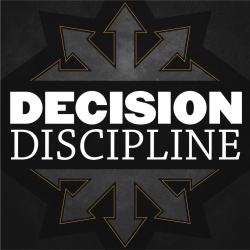Decision Discipline
 You make business decisions every single day. Every once in a while, a decision comes along with the potential to be a game changer for your organization.
You make business decisions every single day. Every once in a while, a decision comes along with the potential to be a game changer for your organization.
Maybe your company is considering mergers and acquisitions. Maybe you’re trying to decide whether to expand operations, enter a new joint venture, build new facilities or invest in a new large-scale research and development project.
The last thing you want to do is make these decisions on the fly using nothing more than gut instinct—even when the decisions have to be made relatively quickly, said Allan Gray, director of Purdue University’s Center for Food and Agricultural Business.
“Even when big decisions require us to be quick to avoid being left behind, it’s critical that we still have discipline to give our businesses the best chances for success,” he said. “It’s fairly common to make a decision and then wonder how that conclusion was reached. That’s a scenario we want to avoid as much as possible.”
As Gray admits, the pressure to perform, grow and manage day-to-day activities can make decision discipline a challenge. But ultimately, it’s that discipline that can help organizations maximize the potential to capture the upside of growth opportunities and minimize risk.
So what does decision discipline look like? It looks like taking the time—even when there isn’t much—to figure out the true objective of the decision at hand, identify all of the alternative approaches to achieving those objectives and performing careful analysis of each alternative.
“One of the most important parts of careful analysis is to have the discipline to clearly document all of the assumptions made during the analysis,” Gray said. “This ensures that when we choose an alternative and move forward, we know the critical variables or assumptions that make the decision a good one.”
Don’t get trapped
Part of making strategic and disciplined decisions also stems from avoiding a variety of common psychological traps, or built-in flaws in our thinking, said Nicole Widmar, associate professor of agricultural economics.
“Understanding what these traps are and how they affect decision making is critical to understanding how people arrive at their conclusions,” she said.
John Hammond, Ralph Keeney and Howard Raiffa cover the topic of decision traps at length in their Harvard Business Review article, “The Hidden Traps in Decision Making.” Some common traps include:
- Status Quo – The decision maker is biased toward options similar to the current situation.
- Framing – When options are presented in ways that can change perspective.
- Anchoring – The decision maker gives disproportionate weight to the first information received.
- Confirming Evidence – The decision maker seeks out biased advice or information that supports a particular option.
“These are just a few examples of psychological traps decision makers fall into in the business world,” Widmar said. “Being aware that traps exist and considering them throughout the decision process can help decision makers stay disciplined and choose to pursue the most sound of the options for their businesses.”
Strategic Decision Making
Disciplined decision making doesn’t come easy. It’s something that has to be practiced. The Center for Food and Agricultural Business offers the Strategic Decision Making professional development program specifically to help you learn to make the best possible decisions to move your company in a successful direction. One of the ways the program facilitates that is through optional confidential personal case studies. Bring a big decision your organization is facing and immediately apply classroom concepts, tools and decision frameworks to your individual needs. Faculty will be available for one-on-one feedback.
Check out our upcoming programs and exceed your professional development goals! Position yourself to excel in your career by attending one of our professional development workshops. Each educational program focuses on different business topics and concepts related to the agribusiness industry you serve, including: marketing, sales, finance, talent management and strategy. Not sure which one is right for you? Let’s chat!
Tags: Agribusiness, Decision Making, Discipline, Risk Management, Strategy
RELATED POSTS:
Optimizing Sales Management: Knowledge, Coaching and Continuous Improvement
While we used to think that exceptional salespeople possessed an innate gift, recent data suggests the impact of today’s sales managers in nurturing and refining this gift to unlock its fullest potential.
A great moment for value-based sales in agribusiness
Value-based sales can empower companies to craft compelling value propositions, understand the customer’s business model and effectively communicate to stakeholders.
How can big data empower the development of new products?
Data is one of the most powerful resources for a company. It enables accurate decision-making and minimizes risk, ensuring greater revenue and sustainable growth.
